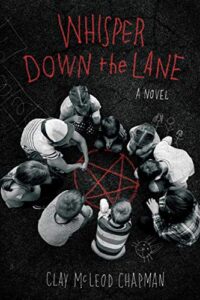![All These Bodies by [Kendare Blake]](https://m.media-amazon.com/images/I/41oZ0ufHrIL.jpg)
All These Bodies by Kendare Blake
Quill Tree Books, 2021
ISBN-13 : 978-0062977168
Available: Hardcover, Kindle edition, audiobook ( Bookshop.org | Amazon.com )
In All These Bodies, Kendare Blake imagines a murder spree throughout the Midwest in the summer of 1958, known as the “Bloodless Murders” or “Dracula Murders” because the victims have all been drained of blood. On September 19, the Carlson family is found murdered in their Minnesota farmhouse, with a fifteen-year-old girl, Marie Catherine Hale, drenched in blood, still alive. Is she a victim, accomplice, or killer?
Michael Jensen, the seventeen-year-old son of the sheriff with hopes of becoming a journalist, is the only person Marie Catherine will talk to, and revealing the killer is her one chance to avoid being extradited to Nebraska and tried for the death penalty. Getting the truth out of Marie Catherine is trickier than just asking her questions once and expecting straightforward answers, though; it becomes a long, drawn out process that creates a sympathetic connection between the two teens. Michael is also facing other dangers: his peers are turning against him as he continues to spend time with Marie Catherine, and he’s almost certain he’s being watched, and perhaps even hunted, in a way that feels almost supernatural.
Inspired by the fictionalized murders in Truman Capote’s In Cold Blood and a murder spree that occurred in the Midwest in 1958, Blake has created a gripping, grisly, fictional “true crime” story that clarifies what it means to be human, a monster, or both. Recommended.
Contains: murder, graphic descriptions of gore, blood drinking, mentions of pedophilia
Reviewed by Kirsten Kowalewski






Follow Us!